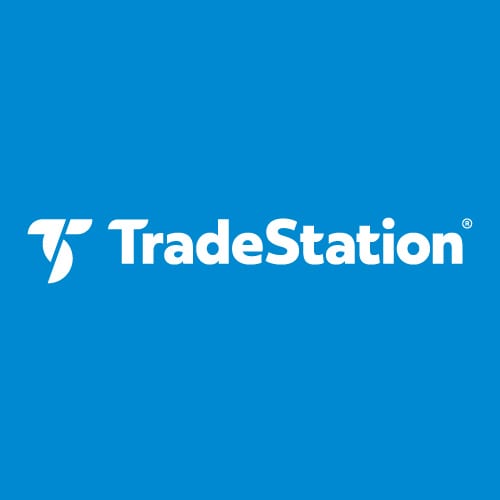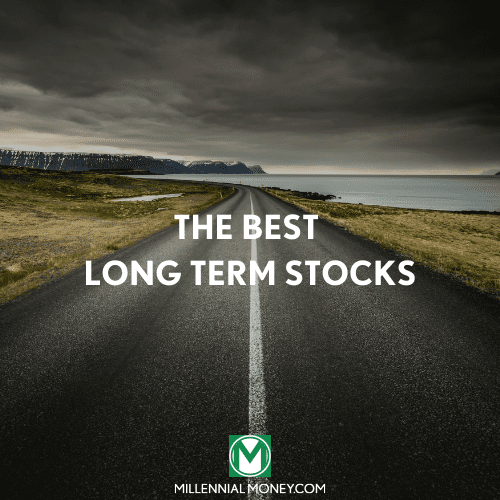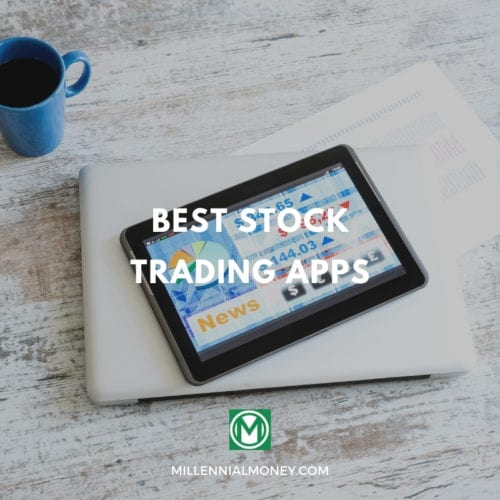If you’re reading this post, you’ve probably already made the choice to invest in the stock market. This is a big decision. It’s a key step in your personal finance journey.
Before you dive in and start investing, you will need to get a sense of what stocks and mutual funds to buy. If you go in blind and start purchasing individual stocks left and right, you will have no way of understanding what you are acquiring and whether you are making the right choices. The stock market is a great tool for building wealth … but only if you put in the time to figure out what you’re doing.
Investors typically make decisions about what to buy based on rankings called stock indexes, by analyzing past performance, and by studying businesses to see which should succeed. In the U.S., there are 13 major stock exchanges to follow. The stocks from these exchanges form the basis of widely followed indexes. The three most widely followed are the Dow Jones Industrial Average, Nasdaq Composite and the Standard & Poor’s (S&P) 500.
What is the S&P 500?
The S&P 500 is an index, or a measure of the performance of a preset collection of stocks. There can be any number of indexes, but the most well-known are those based on the Dow Jones Industrial Average, the Nasdaq 100, and the Standard & Poor’s 500.
Investors often want to know how the various leading stock indexes in the United States differ from one another.
Ultimately, the three leading indexes are all part of one interconnected financial system. However, they have different ways of breaking down and organizing the market so that investors can have a clearer view of what’s happening around them. Each index is like a different lens from which you can view the health of the overall U.S. economy. It’s sort of like a benchmark.
Here’s a brief overview of how they differ.
1. The Dow Jones Industrial Average
The Dow Jones — or the Dow — is the oldest stock market index in the U.S, as it was launched back in 1896.
The Dow represents 30 large-cap stocks, which are all determined by the Wall Street Journal. Large-cap stocks refer to shares from large, publicly-traded organizations.
Companies within the Dow Jones are ranked by share price, and a divisor is used to establish the final market value. This is what’s used to create the Dow rankings.
2. Nasdaq
Nasdaq 100 is the newest of the three major stock indexes, as it came online in 1985. Nasdaq tracks the largest non-financial companies in the Nasdaq exchange.
It should be noted that Nasdaq is often referred to as a technology index because it tends to favor technology companies.
The Nasdaq 100 rankings are based on market capitalization, or the total dollar market value for a company’s outstanding shares of stock.
3. S&P 500
The S&P 500 is the middle child of the three large U.S. stock indexes, launched in 1962.
What separates the S&P 500 from the Dow and Nasdaq is the scope of the overall index. The S&P 500 is considered to be the largest measure of the U.S. economy, encompassing 500 large, publicly-traded companies.
What determines the S&P 500?
Not all companies are eligible to be listed in the S&P 500.
In order to be added to the S&P 500, specific criteria must be met:
- The organization’s market cap must be at least $8.2 billion (this minimum will raise over time).
- A company must have positive reported earnings during their most recent quarter. In addition, a company must demonstrate long-term growth over their last four quarters.
- The S&P only includes U.S. companies.
- There must be at least 50% outstanding shares in their public float.
- The company’s stock needs to have an active market.
As of December 2020, the top 10 companies by index weight in the S&P 500 are:
- Apple (AAPL), 6.45%
- Microsoft (MSFT), 5.65%
- Amazon (AMZN), 4.77%
- Facebook (FB), 2.33%
- Alphabet, Google’s parent company: shares in class A (GOOGL), 1.79%, and in class C (GOOG), 1.76%
- Berkshire Hathaway (BRK.B), 1.48%
- Johnson & Johnson (JNJ), 1.33%
- Procter & Gamble (PG), 1.26%
- NVIDIA (NVDA), 1.14%
The S&P 500 index is formulated by dividing the total market value of all 500 companies in the index by a figure called the index divisor.
Do You Have to Pick One Index or the Other?
One of the most important things to keep in mind about these three leading indexes is that they exist to inform and influence investors when buying stocks.
In other words, you don’t have to pick one index or another when you start making investments. Rather, these indexes serve to provide a broad overview of the overall state of the stock market.
Smart investors will therefore follow all three markets and use them to gain an overall state of how the total U.S. economy is faring. This can let you know if it’s a good time to start investing.
How to Invest in the S&P 500
“The goal of the non-professional should not be to pick winners — neither he nor his ‘helpers’ can do that — but should rather be to own a cross-section of businesses that in aggregate are bound to do well,” Warren Buffett once famously explained. “A low-cost S&P 500 index fund will achieve this goal.”
In addition to using the Standard & Poor’s 500 to assess the overall U.S. stock market and economy, you can also choose to invest in the S&P 500. This is a tried and true way to make money in the stock market, as Buffett pointed out.
Because an index is simply a measurement tool, you can’t invest directly in the S&P 500 itself. Instead, you’d have to buy shares in every company individually (505 separate transactions!), OR purchase one of the various index funds that specifically track the S&P 500.
These funds buy those 505 stocks and hold them in a real portfolio.
So, how do you actually get started? 4 easy steps:
1. Open a brokerage account
Buy S&P 500 funds by opening a brokerage account online using services like Schwab or E*TRADE. Brokers tend to vary in their approach, offering different types of investing and tools to help buyers make financial decisions.
You can read my article The Best Online Brokers in 2025 to learn more about each, or here’s a quick look at some of my favorites:
 Robinhood Robinhood |
 TradeStation TradeStation |
 Schwab Schwab |
|
|---|---|---|---|
| Min. Investment | $0 | $0 | $0 |
| Fees | $0 on Stocks, ETFs, and Mutual Funds | $0 on Stocks and ETFs; $15 for Mutual Funds | $0 on Stocks, ETFs, and select Mutual Funds |
| Open an Account | Open an Account | Open an Account |
2. Decide between mutual funds and ETFs
While both track the S&P 500 and work similarly, there are a few key differences that will influence whether you choose an S&P 500 mutual fund versus an S&P ETF.
- Mutual funds are traded only once per day, after the market close, and are intended to be owned for a long period of time. While they can be passively managed like an ETF, they’re often actively managed by a professional and therefore come with higher fees – but also the chance to outperform the market
- ETFs automatically track an index (in this case the S&P 500) and are traded like any other stock, with the price changing constantly throughout the day as investors buy and sell. You can hold these for as short or as long as you’d like, with no early withdrawal penalties.
ETFs are typically the way to go if you’re looking to invest in the S&P 500, but you should decide what’s truly best for you based on your portfolio and investing style.
3. Pick your fund
Once you’ve decided between an ETF or a mutual fund, you simply pick one of the funds based on this specific index. You should consider their expense ratios and which are offered by your broker.
Some of the top S&P 500 funds to consider:
01. SPDR S&P 500 ETF (NYSEARCA: $SPY)
SPY is one of the most popular investment products to buy simply because it exposes you to the entire market and S&P 500. So, you can use the S&P 500 as a cost-effective way to profit from companies like Apple ($AAPL), Amazon ($AMZN), Alphabet ($GOOG), Berkshire Hathaway ($BRK.B), Microsoft ($MSFT), Visa ($V), and Johnson & Johnson ($JNJ), among many others.
SPY is considered the most liquid S&P 500 fund. In other words, this fund is very easy to trade because it has a lot of volume and comes with lower trading costs.
02. SPDR S&P 500 ETF (NYSEARCA: $SPY)
SPY is one of the most popular investment products to buy simply because it exposes you to the entire market and S&P 500. So, you can use the S&P 500 as a cost-effective way to profit from companies like Apple ($AAPL), Amazon ($AMZN), Alphabet ($GOOG), Berkshire Hathaway ($BRK.B), Microsoft ($MSFT), Visa ($V), and Johnson & Johnson ($JNJ), among many others.
SPY is considered the most liquid S&P 500 fund. In other words, this fund is very easy to trade because it has a lot of volume and comes with lower trading costs.
03. Vanguard S&P 500 ETF ($VOO)
The Vanguard S&P 500 ETF offers high potential for investment growth and is appropriate for long-term investing, which is why you’ll find it in many IRAs. This is a large blend of stocks, and has a low expense ratio of 0.03%. (Remember that it’s important to keep an eye on expenses and fees — the more you have to pay someone to invest for you, the less that actually goes toward investing.)
04. Fidelity 500 Index Fund ($FXAIX)
As of October 2020, FXAIX had assets totaling about $252 billion, across 508 different holdings. It’s also returned 15.14% over the last year, and 13.73% annualized over the last decade.
05. Schwab S&P 500 Index Fund ($SWPPX)
Since debuting in 1997, this professionally managed fund has generated roughly $34.41 billion in assets. It has a five-year annualized total return of 10.86%, and a three-year annualized total return of 13.94%.
06. iShares Core S&P 500 ETF ($IVV)
Another popular ETF trust for the S&P 500 is the iShares Core S&P 500 ETF, which has a market cap in excess of $223 billion at the time of this writing. It debuted in 2000 and also has a low expense ratio at 0.03%.
4. Enter your trade!
The final step to investing in the S&P 500 is to actively enter your trade using your broker’s platform. It takes just a few clicks, and then you’re an index fund owner!
Understand the risks, be long-term focused, and then sit back and let your money work for you.
What is a S&P 500 Buffer Protect Strategy Fund?
One of the downsides about investing in the stock market is that it’s highly volatile, meaning performance can fluctuate over the course of a year. Over the long term, the stock market tends to march steadily upward. But even for investors who are focused on long-term growth and maximizing future results, this volatility can be difficult to push through.
This is why financial advisors will sometimes tell people to “hold on for dear life” when investing. And the truth is that it’s often much easier said than done.
There is one investment strategy that you can use to mitigate volatility which is called a proffer protection strategy. Investing in a buffer fund will aim to protect against the first 10% drop in the S&P 500 index over a one-year period. It will provide protection to equity exposure during down markets while allowing investors to participate in possible growth opportunities that equities provide during up markets.
If investing in the stock market were easy, everyone would be a millionaire. But if you look at the long-term performance of the stock market, dumping your funds into an ETF that tracks the S&P 500 and “forgetting about it” is pretty much as safe as it gets.
FAQs
How often does the S&P 500 rebalance?
S&P funds are rebalanced on a quarterly basis. This rebalancing occurs on the third Friday of March, June, September, and December. Intra-month changes can also occur when companies become ineligible to remain in the index due to failure to meet the relevant criteria.
This regular rebalancing is important for investors, as it provides a relatively recent update of the health of the overall market.
Do S&P funds require a minimum investment?
When purchasing funds, they can sometimes require you to purchase a minimum investment. This is one of the downsides. They are not always as flexible as buying stocks.
That said, there are some index funds out there that have low minimum investments and some that do not have any. Shop around for the best deals so you don’t have to put more money than you can afford on the line.
How does the S&P 500 handle weighting?
The S&P uses a system called weighted market capitalization to rank companies. In other words, the S&P 500 will give higher weight to companies that have more market capitalization. This means that giants like Microsoft and Apple have more influence on an index than smaller-cap companies.
Are robo-advisors a good idea?
Robo advisors can be helpful for investors that like to take a hands-off approach to managing their money. After all, most of us aren’t professional Wall Street investors. And automated advice can be more accurate than human advice at times — and our own boneheaded “intuition,” for that matter.
Using an automated financial advisor for an S&P 500 fund can help make sure that your accounts are on track and in line with what other investors are doing. In this light, they can provide excellent investment advice.
Just keep in mind these automated services can come with heavy fees. So, if you’re considering using a robo-advisor, make sure to leverage a cost-effective option.
Otherwise, you could wind up paying too much in the long run — with money that could have been invested instead.
The Bottom Line
As you can see, investing in the S&P offers some great upside for investors, with a few great index funds and ETFs that offer steady long-term growth along with low fees (assuming that the fund’s expense ratio is manageable).
Just remember this disclaimer: The S&P 500 isn’t the only index to follow. You can also buy funds that follow the Dow or Nasdaq, as well as the myriad other exchanges. In doing so, you can add further diversification to your portfolio and protect yourself against risk. There’s a reason we’re told not to put our eggs in one basket, after all.
So get out there and explore your options. Consider using the S&P 500 as a way to build a robust portfolio that will grow over time as you walk down the path that leads to financial freedom.





No comments yet. Add your own